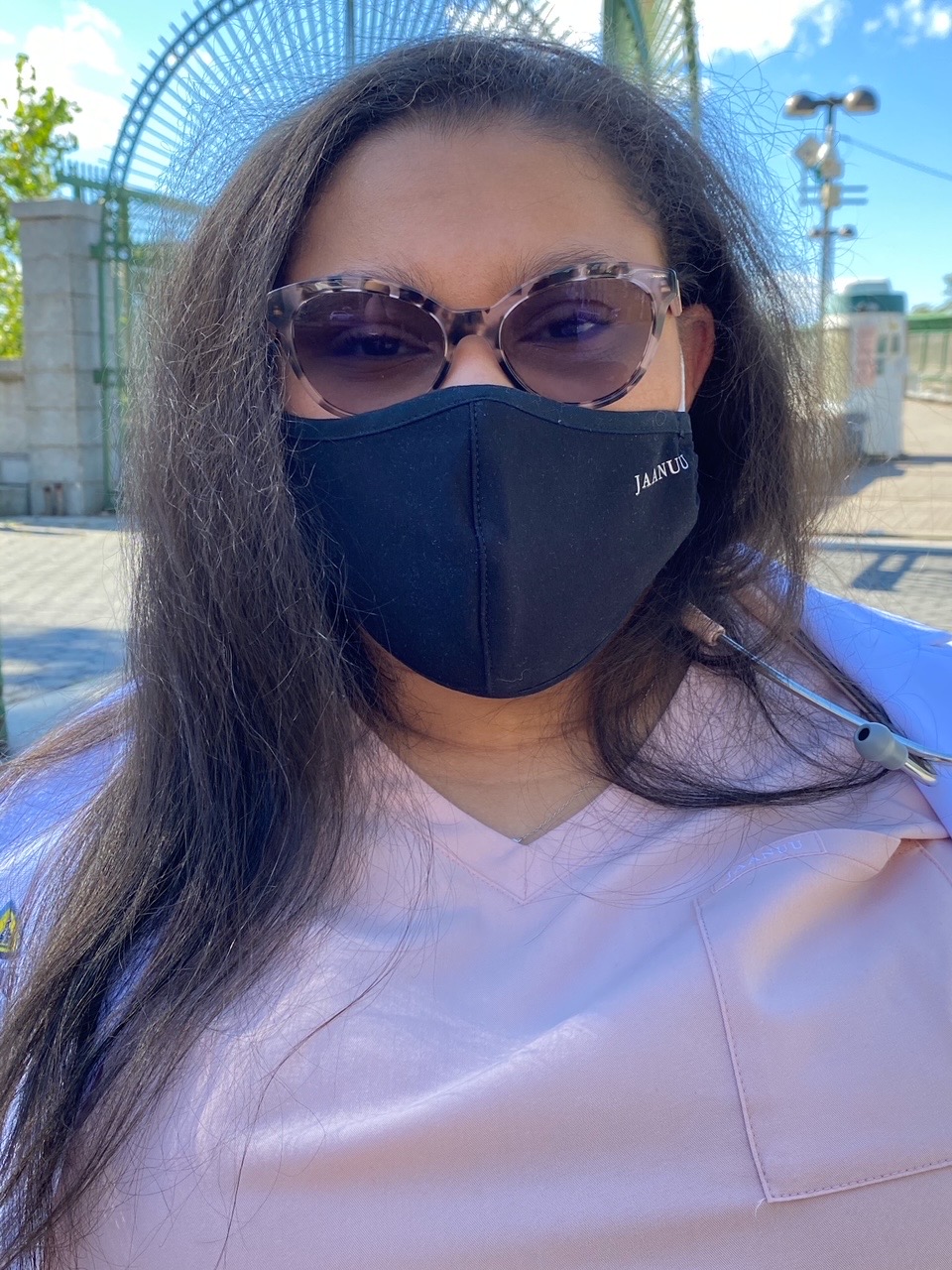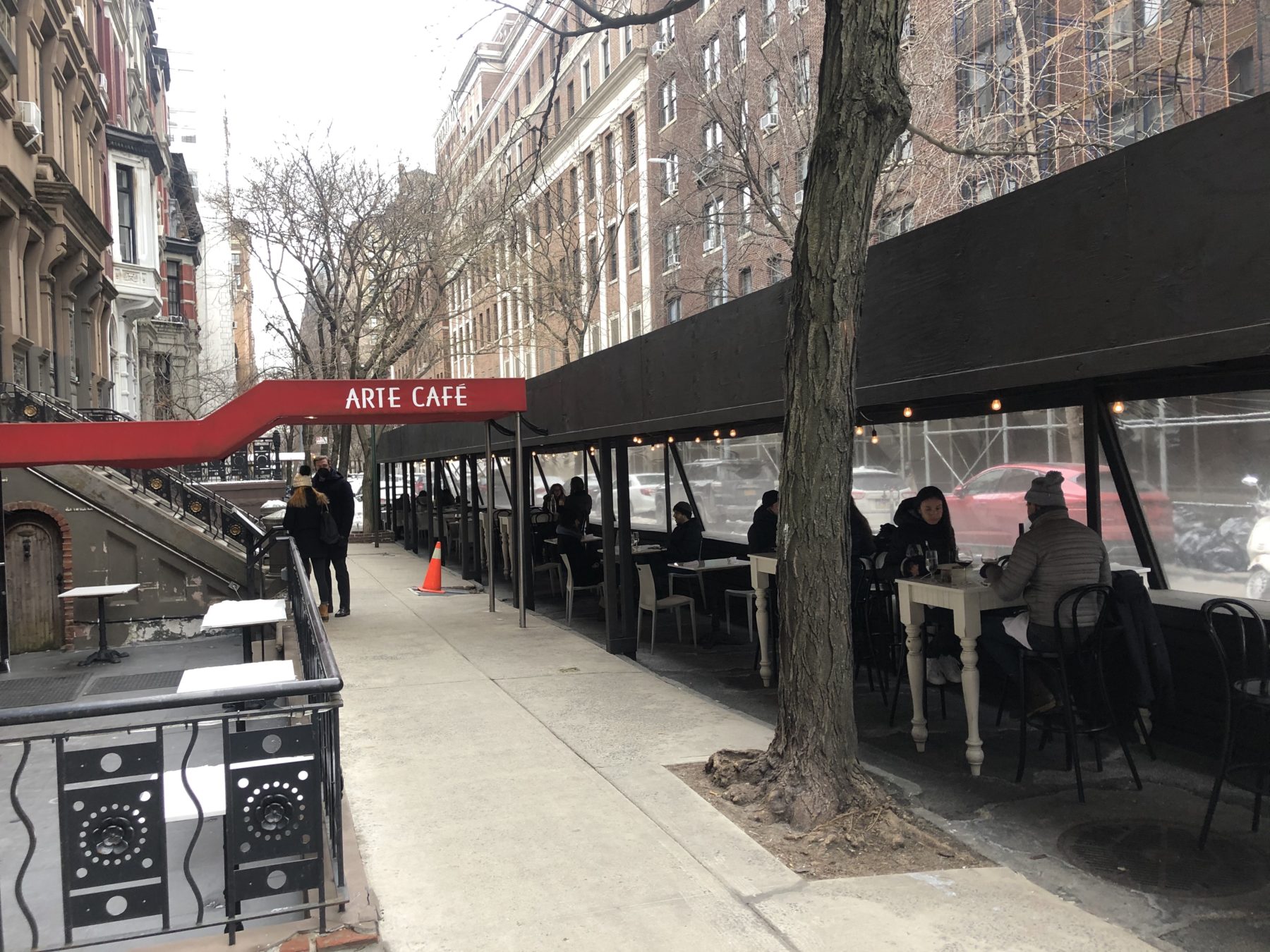Before the pandemic, Daphne Frias and her mother spent their summers eating at as many different types of restaurants as possible, but their favorite was Italian.
The pair would rank their favorite meals – creamy pasta with mushrooms and crumbly bruschetta is currently in first place – and they maintain an exhaustive list of the city’s best tiramisu.
Although it is a cherished pastime, eating out is not always easy for Frias because she uses a wheelchair. As restaurant owners across New York City pivoted to outdoor dining in response to COVID-19 indoor-dining restrictions, she and other people with disabilities have experienced a whole new set of barriers to accessibility while eating out.
The 23-year-old Harlem native has cerebral palsy, which affects her balance and ability to move. Before visiting a restaurant, she has always had to call to make sure it is accessible, and still, she sometimes shows up to find inaccessible bathrooms or steps up to the front door that she can’t navigate.
Most outdoor spaces are much smaller than their indoor counterparts, meaning Frias also has a harder time getting around tables and chairs. She has had to ask other patrons to stand up from their meals to let her by.
“Even though I know I also deserve to enjoy my meal and be there with my mom and my family, it’s still awkward,” said Frias.
New York City restaurants must follow the federal Americans with Disabilities Act, as well as state and city disability laws, said Christopher Schuyler, senior staff attorney with New York Lawyers for the Public Interest.

Specific accessibility guidelines for outdoor dining include at least 3 feet of space for mobility throughout the dining area, ADA-compliant ramps and access to bathrooms if they were provided pre-pandemic. At least 5% of tables must be accessible to people with disabilities and have enough room to accommodate someone with a mobility device. Other guidelines that are not specifically created for accessibility, but make outdoor dining easier for people with disabilities, are 6 feet between tables and an 8 foot passageway between roadway seating and sidewalk dining to give pedestrians enough space to pass.
As of June 2020, New York City outdoor dining is regulated through the Open Restaurant Program, which requires restaurants to apply for permission to use the adjacent sidewalk and street. Currently 11,104 restaurants are participating, according to the NYC Open Restaurant Program Portal.
The city Department of Transportation is the only agency responsible for inspecting restaurant dining encroachments to ensure that they adhere to guidelines. Since the beginning of March only 2,271 of participating restaurants have been inspected for compliance with the Open Restaurant program guidelines. Of those inspected, only 677, or 29%, were found to be fully compliant.
Robert Malta, owner of Arte Café on the Upper West Side, said he built his restaurant’s outdoor sidewalk dining structure himself over the summer, spacing tables and adding a ramp from the curb to adhere to accessibility guidelines. But his restaurant also has a large backyard space for outdoor dining, and he said he understands how smaller restaurants could struggle to accommodate accessibility.

“You only have 20 feet in front of your restaurant, what are you going to put? Four tables? There is no way you can keep that distance,” said Malta.
Restaurant owners are also trying to seat as many people as possible to increase revenue during the pandemic, said Malta.
Since July 1, 2020, the Department of Transportation has received 70 complaints of missing ADA-compliant ramps, said a department spokesperson. In addition, there have been 1,812 complaints of sidewalks blocked because of outdoor dining, according to the NYC311 Service Requests database.
Eman Rimawi has grown increasingly frustrated by the busier sidewalks, now filled with hungry diners sitting at tables, or waiting to eat, which limits the room she has to walk.
Rimawi, whose legs were both amputated because of lupus, an autoimmune disease that attacks a person’s tissue and organs, said she has had to maneuver into the street with her walker because she could not get through sidewalks crowded with brunch-goers and evening diners. Cars honked at her, but she said she had no other way of getting around.
“I can’t fly. I’m not a superhero because I’m an amputee,” said Rimawi. “What do you want me to do? All I can do is walk in the street to avoid this and then come back on the sidewalk when I can.”
Both Frias and Rimawi expressed skepticism that the outdoor dining guidelines created by the city will lead to increased restaurant access, because so often people with disabilities are left out of the consultation process.
The Department of Transportation worked with the Mayor’s Office for People with Disabilities before the launch of the program, said a Department of Transportation spokesperson. But, Frias said even if inspectors were to try and enforce these accessibility guidelines, they lack real experience having to navigate the space as a disabled person.
“I feel like they created these guidelines to say that they exist,” said Frias.
Susan Dooha, executive director of the Center for the Independence of the Disabled, New York, echoed Frias’s concern and emphasized the need for enforcement. Right now, she said, it seems like any guidance from the city is non-existent.
“There is no ADA police,” said Dooha. “It is not self-enforcing.”
When inspectors see problems, they work with restaurant owners to bring their business into compliance, said the Department of Transportation spokesperson.
The Department of Transportation’s Open Restaurant Program website states restaurants are given 24 hours to fix any issues of noncompliance. If they fail to do so, they may be fined $1,000. The Department of Transportation has not commented on how many restaurants have been fined.
In early February, on a snowy 15-block stretch of Columbus Avenue and Amsterdam Avenue on the Upper West Side of Manhattan, only three restaurants appeared to have outdoor seating that complied with ADA guidelines. While some of the other restaurants had haphazard setups, others had elaborate areas with heat lamps. But all of these structures either lacked ramps or accessible tables, or had very small, unmaneuverable dining areas.
Although restaurant owners are responsible for following accessibility guidelines, Frias said she does not blame them as much as she does the city for not making them clearer and easier to handle.
“It’s up to the city to make ADA compliance a priority,” she said.
As the pandemic enters its second year and New York City explores more alternative options to dining, both indoor and outdoor, Dooha said she hopes the city and community planning boards will begin to ask if their design guidelines are accessible for everyone.
“We all need to and want to use our environment together,” said Dooha. “As a community.”
About the author(s)
Jessica Mundie (she/her) is a master’s student at Columbia Journalism School interested in narrative and feature reporting. She is a recent graduate of the journalism program at Carleton University in Ottawa, Canada, where she also studied English and drama studies. Jessica is interested in reporting on digital culture, hospitality, popular culture and theater, as she was once a stage actor. Jessica can be reached at jessica.c.mundie@columbia.edu or on Twitter at @jessicamundiee. You can read more of her writing on her website, jessicaswriting.com.



